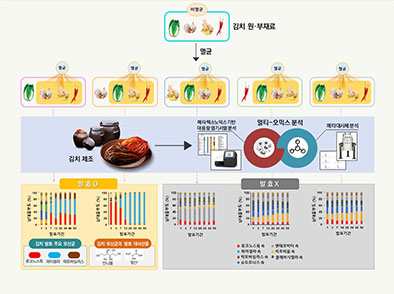Research Library
A hub of global Kimchi culture and the science of fermentation.
World lnstitute of Kimchi

Research Library
2023
-
Discovers lactic acid bacteria strains with high virus resistance from kimchi
Researchers have isolated lactic acid bacteria (LAB) strains with high levels of resistance to phages from kimchi fermented at low temperatures for a long period of time. They have also identified the defense mechanism of the LAB strains against phages, viruses that infect and replicate within bacteria.
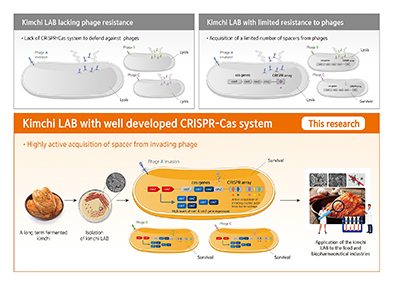
2022
-
Identification of the principle behind the improvement of obesity and neuroinflammation through the regulation of gut-brain axis by kimchi, the world's first
Identification of a new mechanism of action in which kimchi induces the growth of beneficial microbes in the gut, thereby improving obesity and obesity-induced neuroinflammation
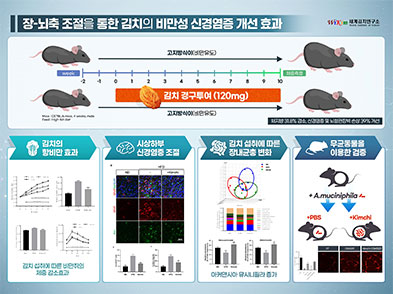
-
Developed real-time analysis technology for cabbage soft rot
Developed "hyperspectral imaging processing technology" that can analyze cabbage diseases, such as soft cabbage rot, in real-time.
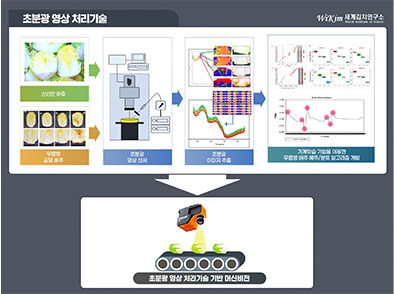
2021
-
Clarified the working principle of kimchi to improve obesity and neuroinflammation through regulation of the gut-brain axis for the first time in the world
Clarified that the various nutrients abundantly found in kimchi, along with the probiotics generated during the fermentation process, interact with Nrf2, an antioxidant system within the human body, to remove harmful reactive oxygen species caused by COVID-19.
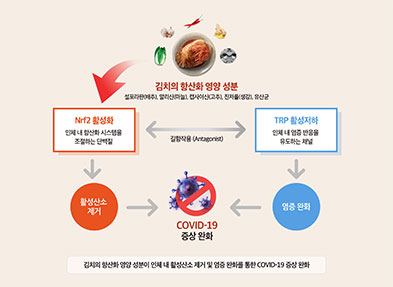
2020
-
Developed and commercialized an automated device for adding seasoning to kimchi
Developed and commercialized successfully a device for automated seasoning of kimchi as part of automating kimchi productionHourly production rate of Whole cabbage kimchi: (before) 280kg/hour → (after) 2,500kg/hour
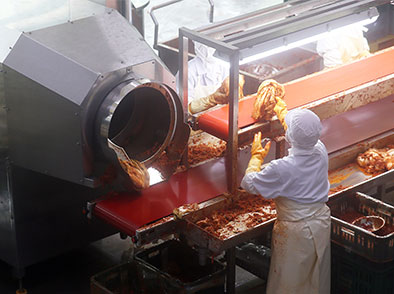
-
Developed technology to control airborne transmission of norovirus.
Controlled norovirus aerosols up to 99.9%, overcoming the limitations of gene analysis, using photocatalytic-based ultraviolet light-emitting diode (UV-LED) treatment technology
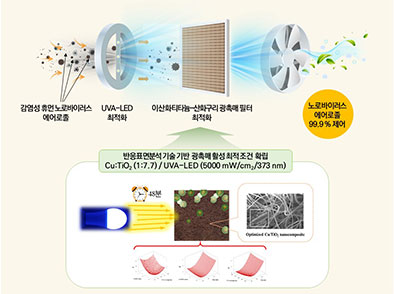
-
Developed a rapid analysis method for glucosinolate.
Using a colorimetric sensor (CSA), 10 types of glucosinolates that affect the bitter taste of kimchi can be rapidly analyzed within 2 hours, with a reliability level of 94% accuracy.
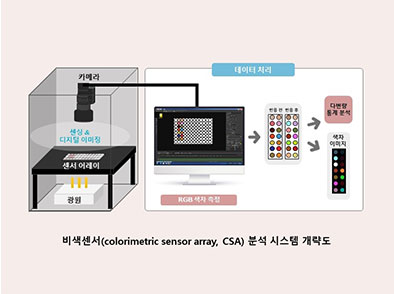
2019~2020
-
Development and technology transfer of functional probiotics derived from kimchi.
Development and technology transfer of 9 types of functional probiotics derived from kimchi, which have effects in improving anticancer, Parkinson's disease, fatty liver, and arthritis (total technology fee: KRW 8.9 billion). Top 10 Outstanding Results of the Year 2019.
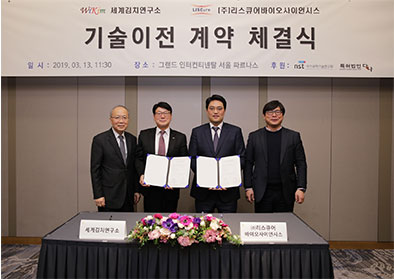
2018~2021
-
Development of starter application process based on industry demand and commercialization of starter
Development of a kimchi taste-enhancing microbial starter and establishment of a distribution system to reduce starter production costs (from KRW 450,000/kg to KRW 70,000/kg), enabling 59 small and medium-sized kimchi manufacturers throughout the country to produce 14,779 tons of kimchi. Top 10 outstanding results of the year 2018. Top 100 outstanding results of national research and development projects in 2019.
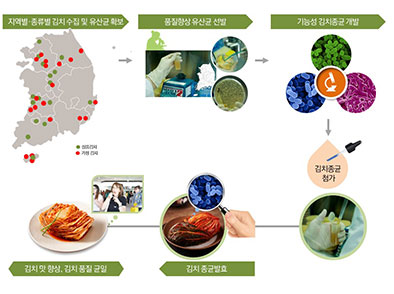
2018
-
Ensuring the hygiene and safety of kimchi.
Ensuring the hygiene and safety of kimchi by isolating yeast causing gas production in kimchi, confirming the toxicity and safety through genetic analysis, and developing an active norovirus discrimination method that complements the drawbacks of existing norovirus gene analysis methods.
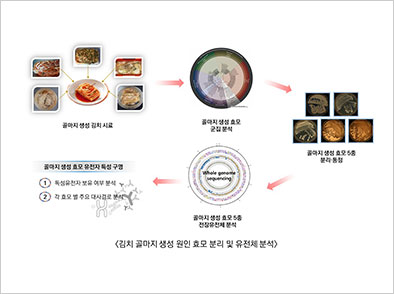
2017
-
Discovery and elucidation of the mechanism for the production of metabolites in kimchi fermentation.
The first discovery of HICA (3-hydroxyisocaproic acid), a functional substance from kimchi that has excellent immunomodulatory and antimicrobial activity, and the excavation of phenyllactic acid, which has superior antimicrobial activity. Evidence has been shown that as kimchi fermentation progresses and the pH decreases, gene expression related to fermentation metabolites is increased.
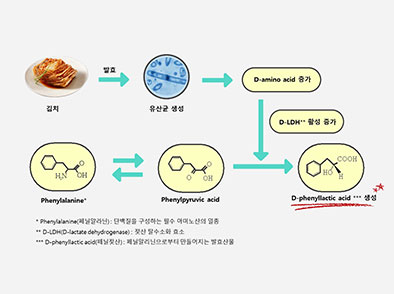
-
Elucidation of the fermentation characteristics of probiotics in kimchi and its raw materials.
Tracking the origin of probiotics induced during kimchi fermentation and elucidation of the fermentation characteristics of these probiotics. Deciphering the whole genomes and metatranscriptomes of three probiotics derived from kimchi, and identifying the reasons why the taste and aroma of kimchi change during the fermentation process.
